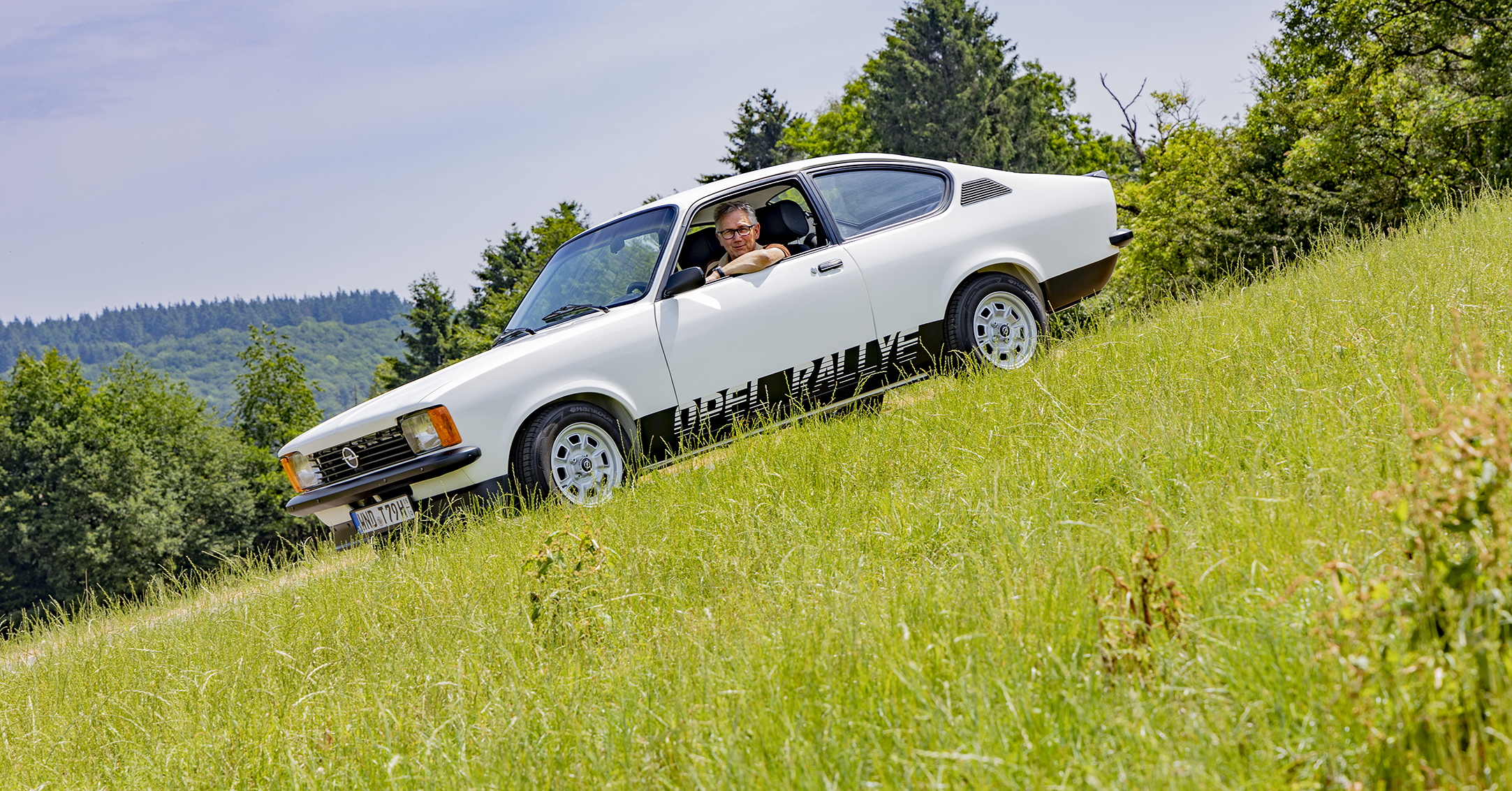
It was November 1988 when the motorsport enthusiast Thomas Scheid deregistered his beloved Opel Rallye 2.0 E. His daughter Julia had just been born. That’s why he decided to renounce his great passion to devote himself to his new job as a father.
But he always knew: “One day I’ll get the C-Kadett out of the garage again.” But that’s not all; until then, he didn’t just want to keep the classic rear-wheel drive car in good shape – for the comeback in the distant future he wanted to rebuild it from scratch. Engine, transmission, body with all hang-on parts, everything new. And exclusively with original parts. Without exception.
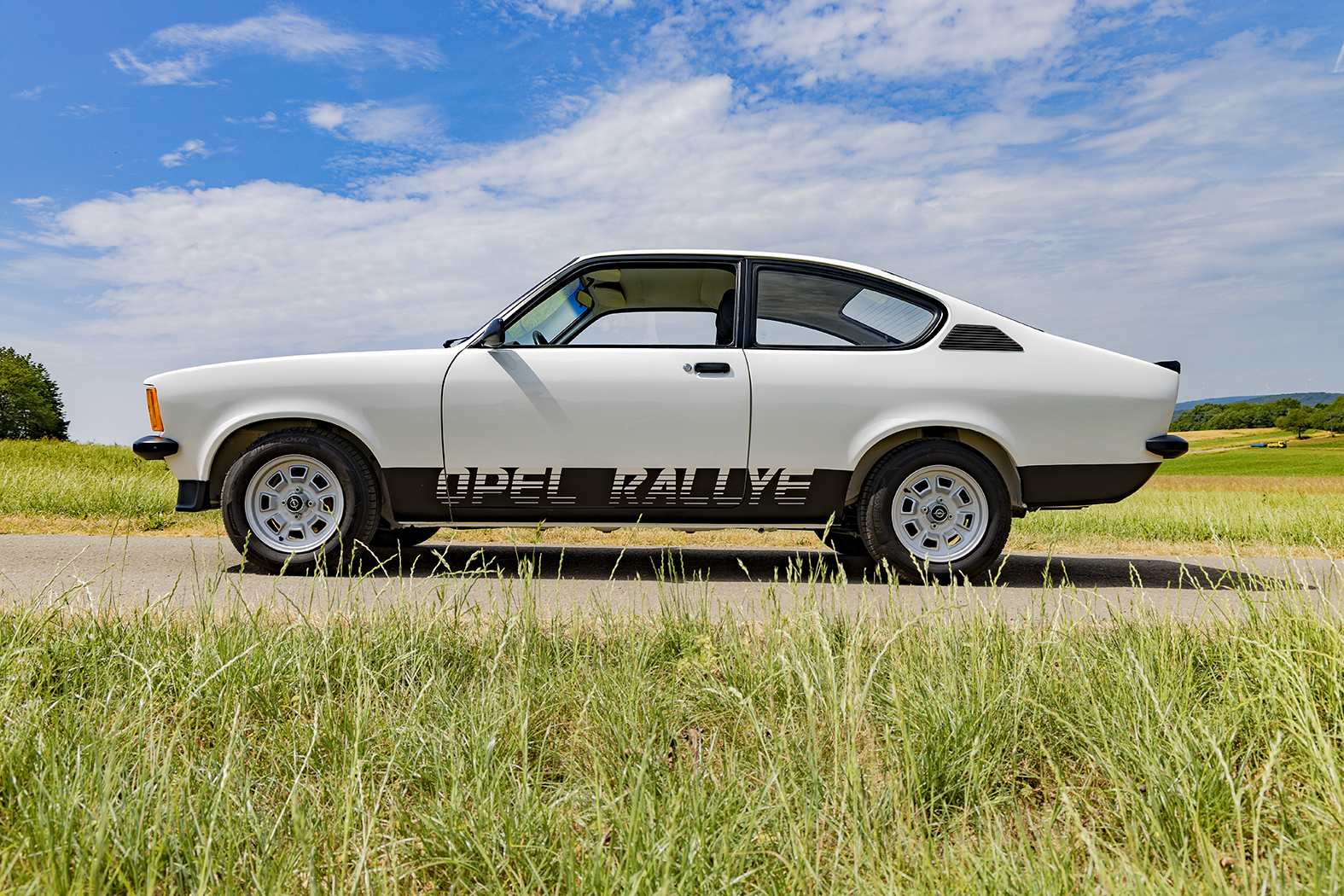
“We were just fans. What reputation the C-Kadett would one day acquire in the classic scene – we never thought about it.”
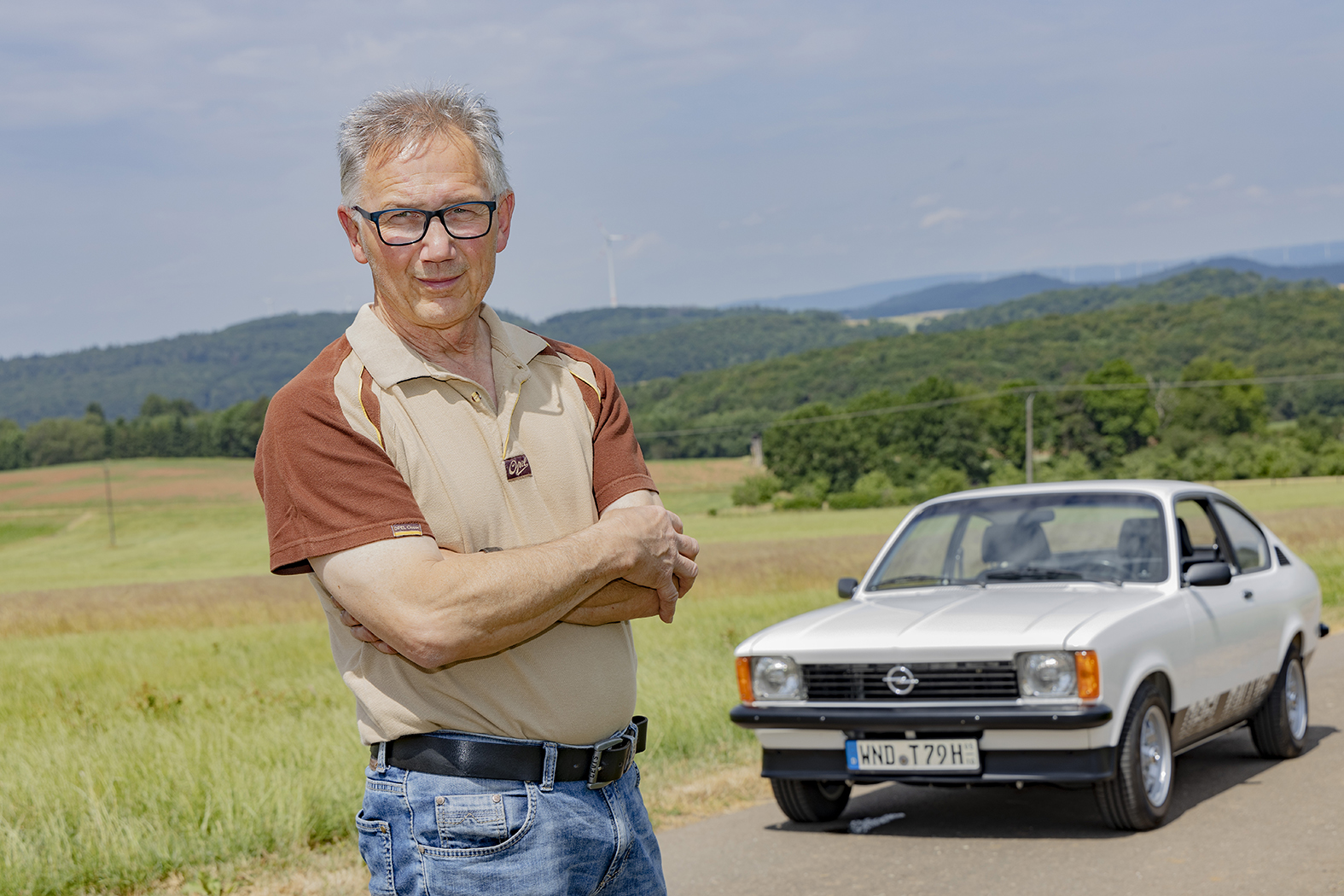
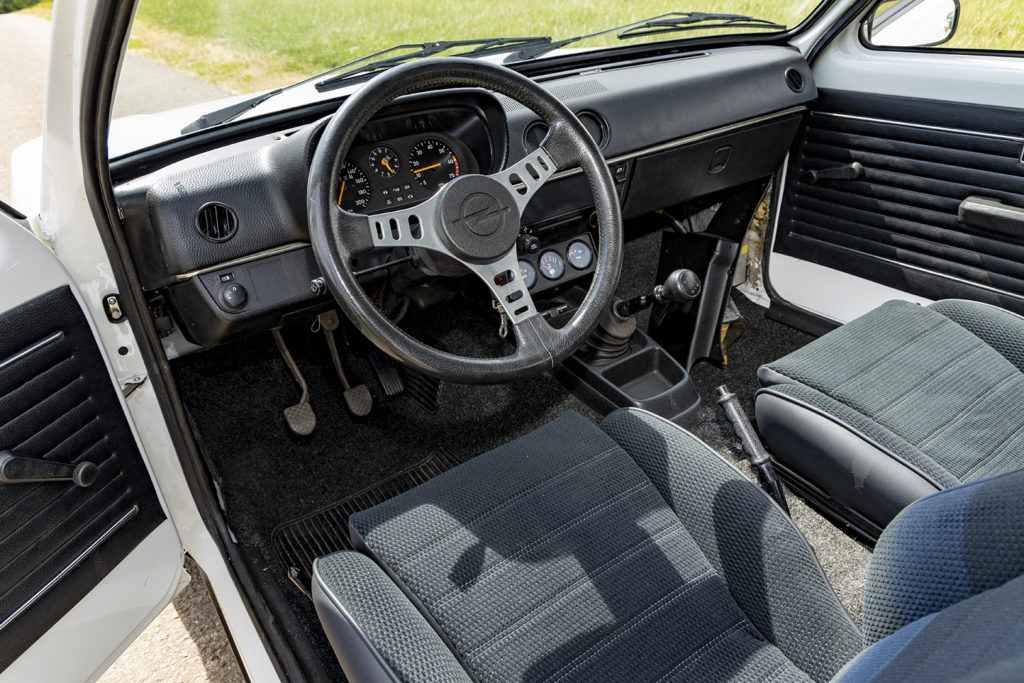
The last C-Kadett rolled off the assembly line in Bochum in 1979 and the official dealers had to continue offering spare parts for another 12 years. So Thomas Scheid immediately started collecting at the end of the 1980s: whether bumpers, exhaust pipes, fuel pumps, lightbulbs, steering wheels, clutch and brake discs, spark plugs, he bought everything new. And stored it in the original packaging.
Did he already suspect back then that his Kadett Rallye would one day become a cult car? “Never,” assures the man from Saarland. “The Kadett C-Club Kaiserslautern was founded in 1985 and I was a member. A few years later I became First Chairman and I still am today. But we were just fans. Whether the car would retain or increase its value, what reputation it would one day gain in the classic car scene – we never thought about that.”
A fleet of rare Kadetts
In the years that the Opel Rallye was awaiting its resurrection, Thomas Scheid worked on dozens of Opels, preferably the Kadett. For his own “fleet”, but also for friends and club members. The garage and basement of his home are currently crammed with “17 or 18 bodies”, he doesn’t know for sure. Almost all rarities. A four-door B-Kadett Olympia, for example. Or a 1600 C-Kadett Coupé with Berlinetta equipment – “probably the only existing example in this absolutely untouched condition.” Or a 1200 Kadett City from the J-series with matt black stripes.
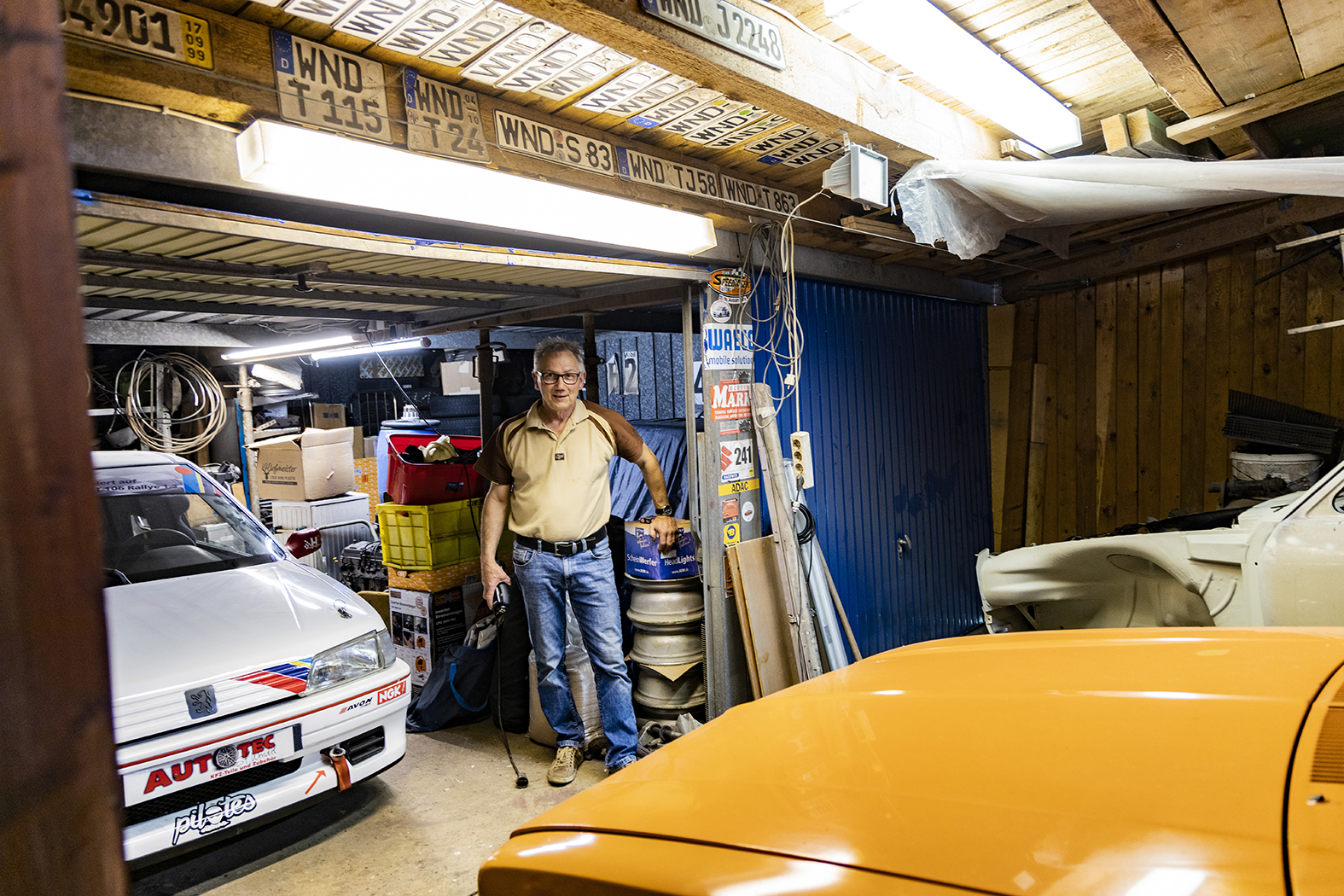
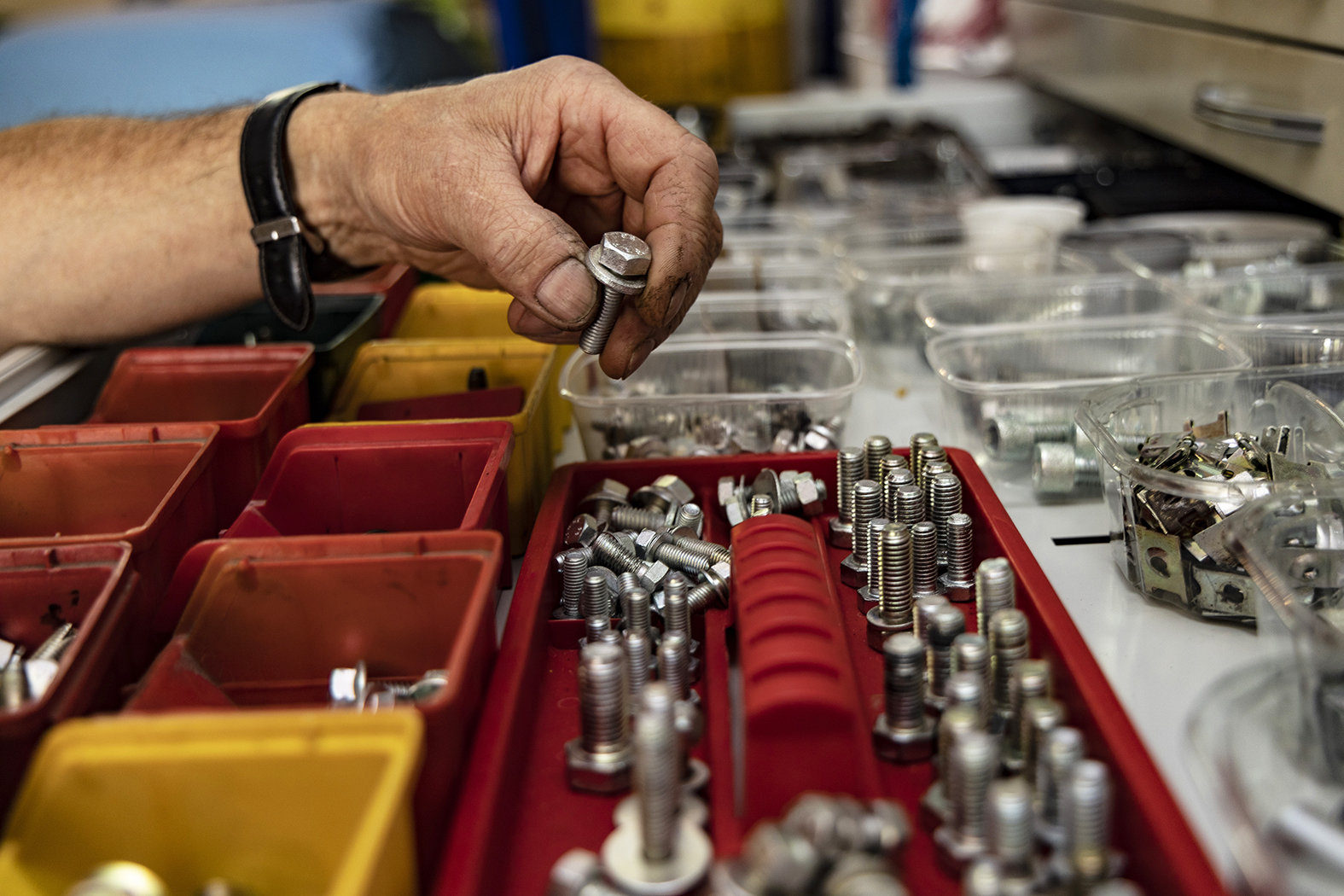
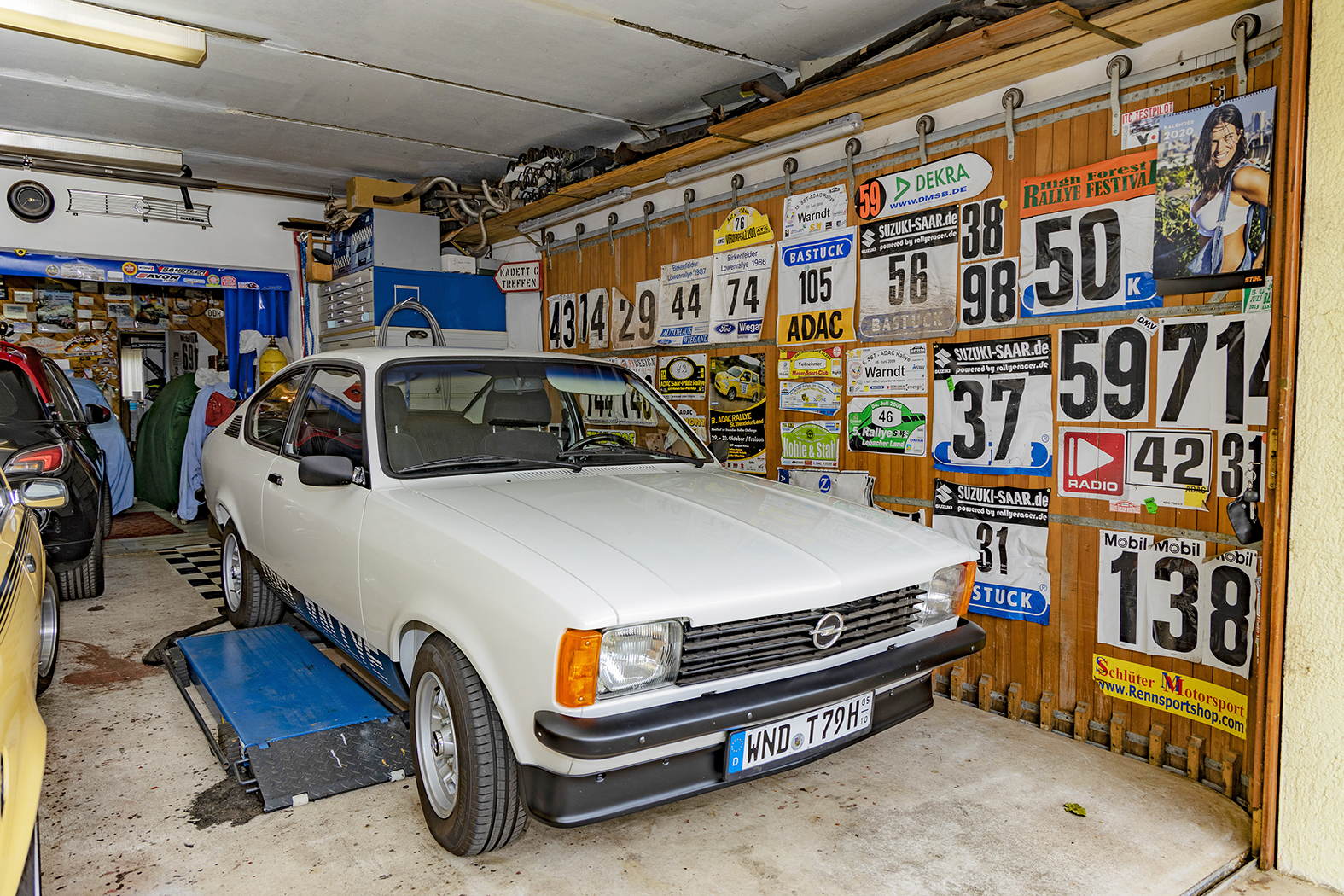
Every component is new. It is probably the only Kadett C that can claim to be built in 2021.
Then, five years ago, he began to put his ambitious plans to rebuild the Opel Rallye into action. First, the car was completely “stripped” – down to the body shell. And then rebuilt, screw by screw. Without exception with freshly unpacked goods. Thomas Scheid took the 2.0-litre engine apart, sent it to the steam immersion bath and put it back together again. In 2018 it was off to the paint shop, then it was screwed, drilled, milled and welded.
Passion versus common sense
In September 2021, Scheid applied for an H license plate – for what is possibly the only C-Kadett in the world that can rightly claim 2021 as the year of manufacture. Essentially it is a new car. Where does the perseverance come from, this meticulousness that enabled him to prepare and then carry out this revival over the years? Thomas Scheid can only shrug his shoulders like anyone who is asked to explain something that cannot be described with pure common sense: true passion.
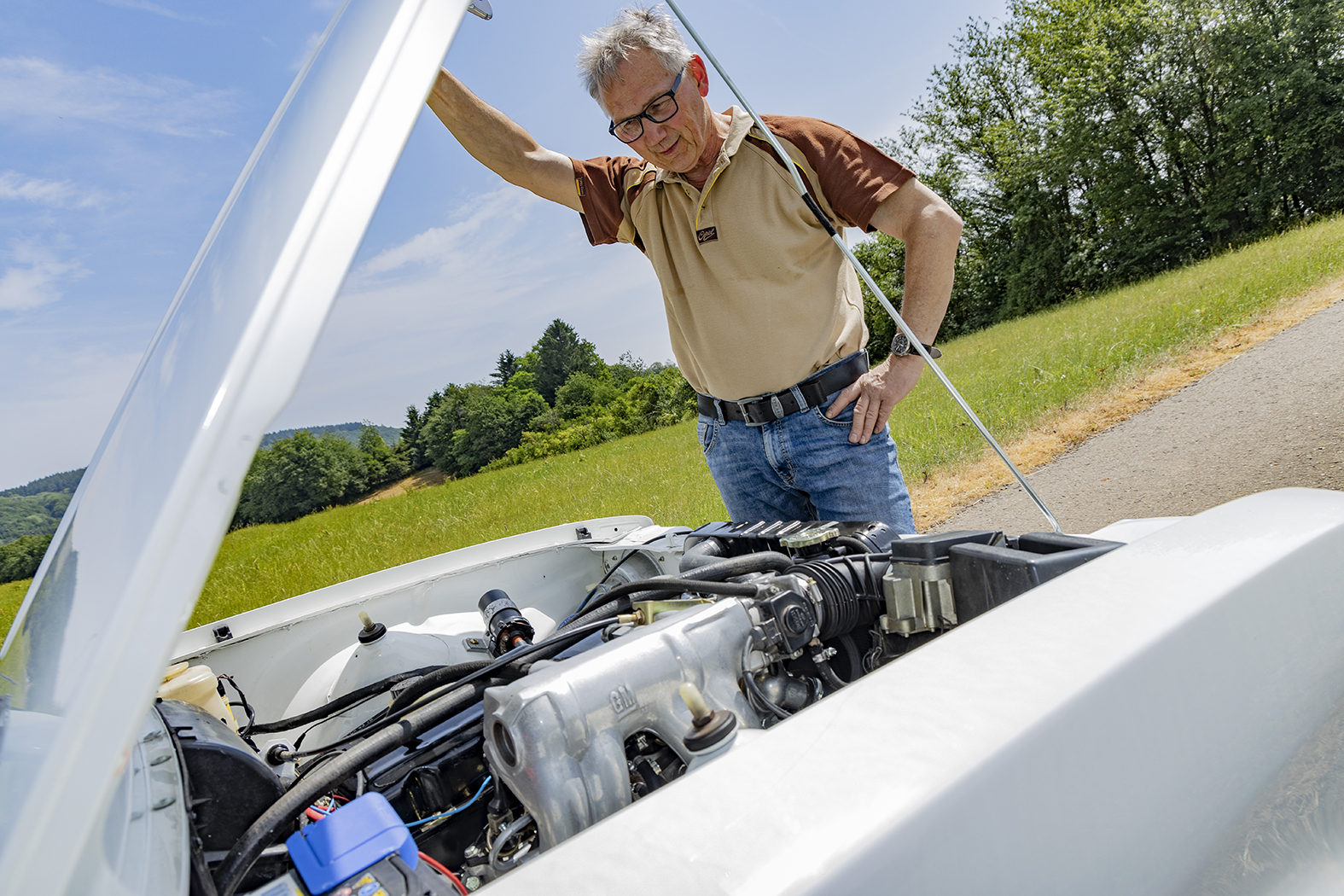
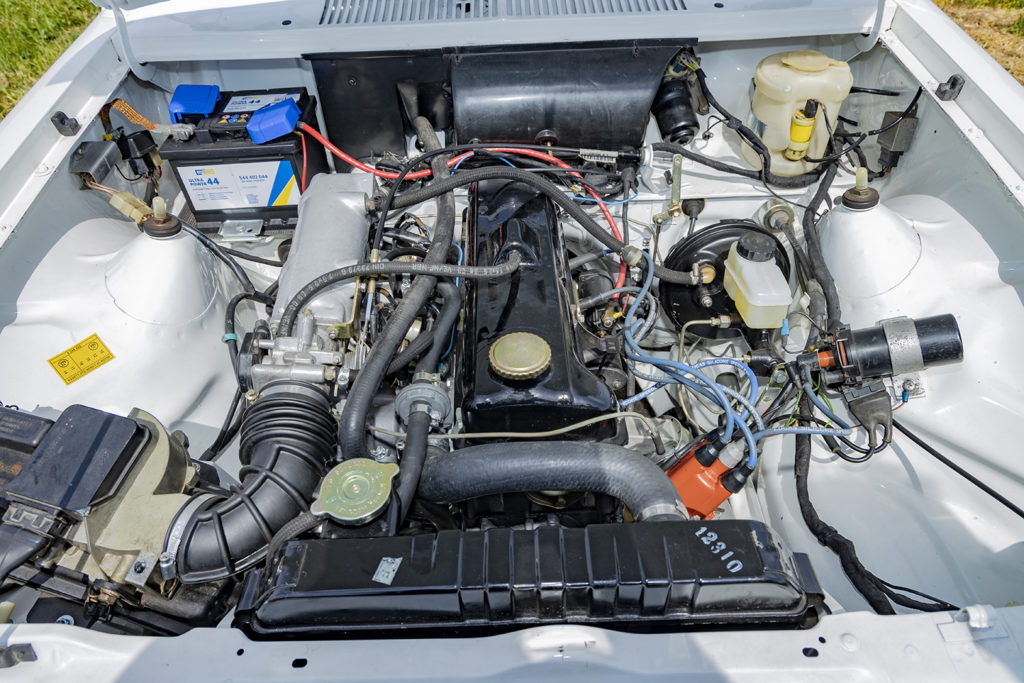
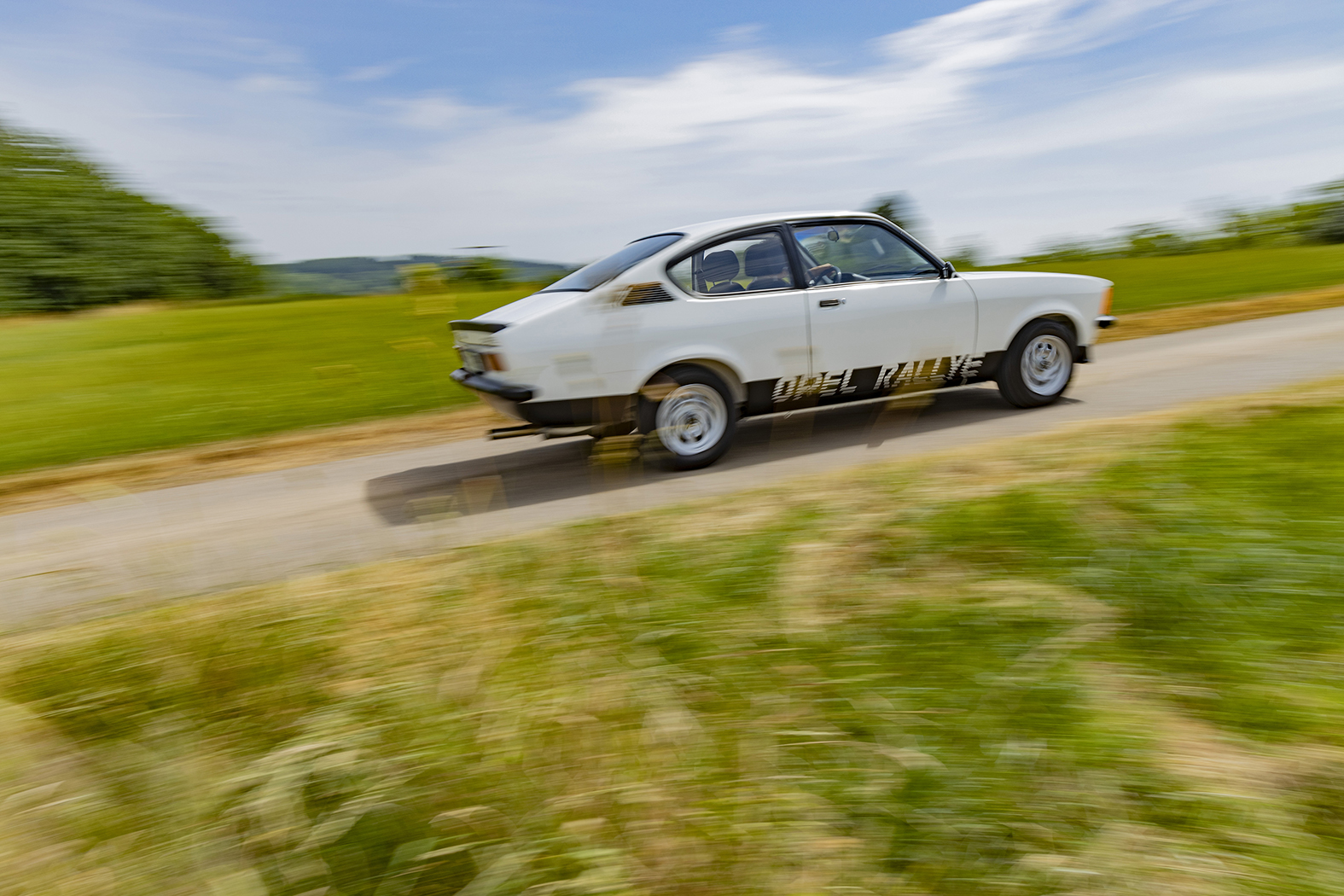
“If I had to buy all the parts today in the classic scene, it would easily cost me €40,000.”
Scheid’s foresight paid off. “If I had had to buy all the parts in the current classic scene, I wouldn’t have got away with less than €40,000,” he is convinced. Buying them over the years was much cheaper. “The bills that I saved amount to around DM5,000. With the amounts that I can no longer document, I reckon it could be double that.” The rebuild is now complete – just in time for the milestone birthday of the model that celebrated its world premiere 50 years ago. Scheid would have liked to have celebrated the comeback at the big meeting of the Kadett C-Club at the end of April. But the car stayed in the garage. “As the organizer of the event, you have a thousand other things to do.” We are all the more pleased that this special Kadett Rallye 2.0 E is celebrating its premiere with a photo shoot for the Opel Post.
Comeback in anniversary year
Thomas Scheid hasn’t been driving rallies for a good ten years, instead he has specialised in hill climbs. He will soon be competing in the 48th Homburger Bergrennen. For this – and only for this – he sometimes gets into another car, a Peugeot 106. The reason: „Every now and then something happens – my Opel models are too good for that.” His masterpiece, the Opel Rallye, is to remain with the family for generations to come. Daughter Julia, for whom the car was taken off the road, is to inherit it. She is now 34 – and has a child that might develop the same passion as the grandfather.
The world car celebrates its 50th birthday
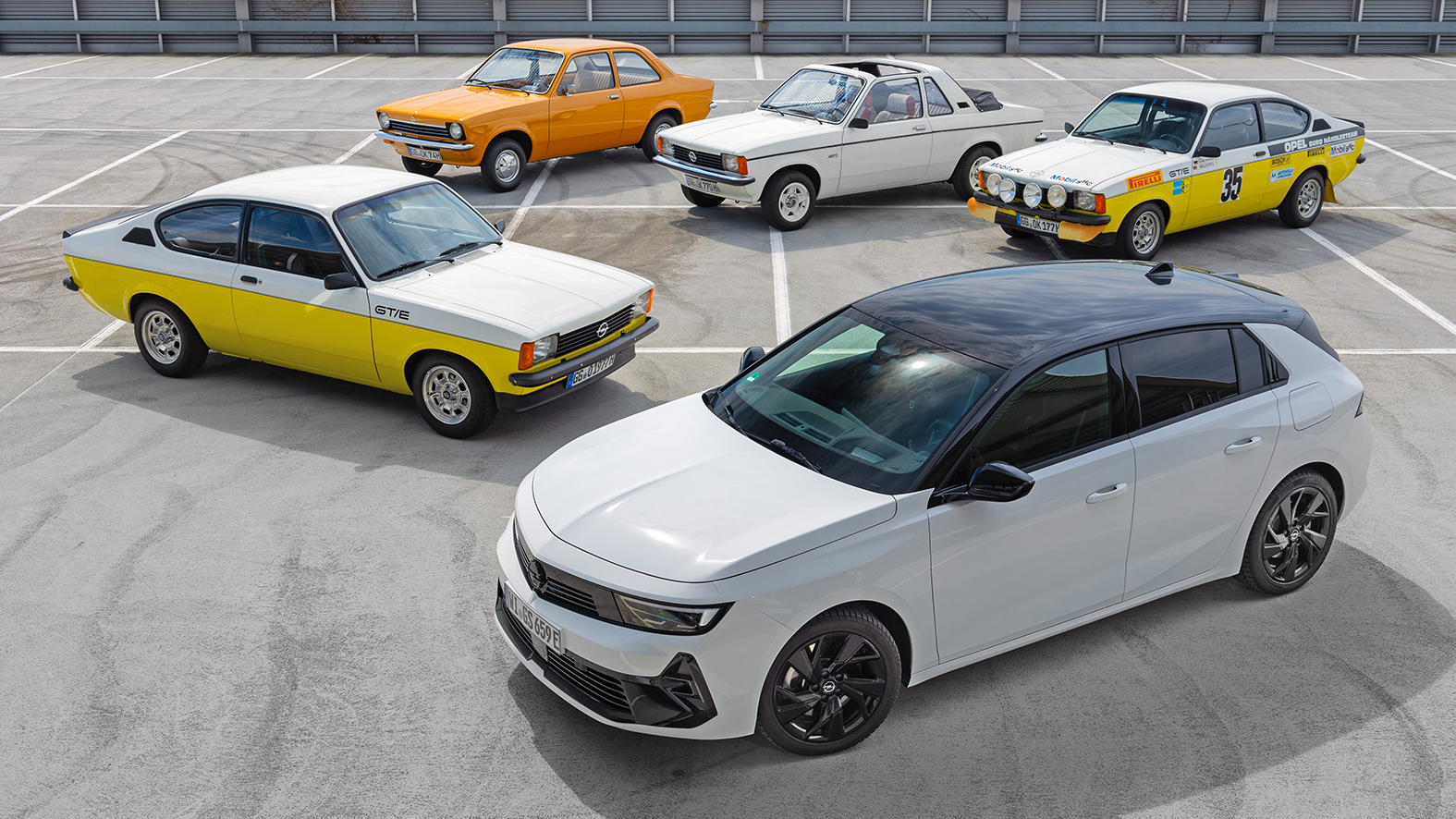
Opel presented the Kadett C to the public 50 years ago. 1.7 million units alone were produced between 1973 and 1979 at the former Opel plant in Bochum. Developed on the T-platform from GM, the so-called “T-Car” rolled off the assembly line around seven million times worldwide, under various brand names.
In Asia, for example, there was the Opel Kadett under the brand names Daewoo, Isuzu and Saehan, in Australia under the name Holden. In Ecuador you could buy it as the Aymesa Condor, in the USA the T-Car was on the road as the Chevrolet Chevette and Pontiac Acadian, in Great Britain as the Vauxhall Chevette. From the autumn of 1980, the name Chevette remained on the market, because the tried-and-tested Kadett C initially stayed in the program under this name alongside the new Kadett D.
The Kadett C range included two and four-door notchbacks, a three-door estate, a coupé and a “fastback” called the Kadett City. In addition, there was the elegant “Berlinetta” equipment line for the coupé and “Berlina” for all others. The Opel tuner Baur built a special convertible, the Aero. A C-Kadett delivery van also drove down the streets, and in Asia and South America pick-ups rounded off the wide range.
The Kadett C also caused a stir in motorsport. Clear lines, large windows, sporty, but still equipped with a decent boot, and affordable too – all this made the world car from Rüsselsheim so attractive.
June 2023
